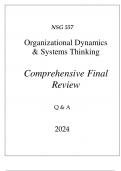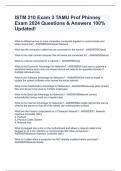Summary
Summary Psychology Cognitive, Moral, Social Development and Language Acquisition
- Institution
- University Of The Highlands And Islands (UHI)
Summary Study notes on moral, cognitive, social development and language acquisition: Overview and evaluation of Kohlberg's, Eisenberg's, Piaget's theories, the cupboard love theories of attachment, Bowlby's and Ainsworth's contributions to our understanding of attachments, different parenting styl...
[Show more]












